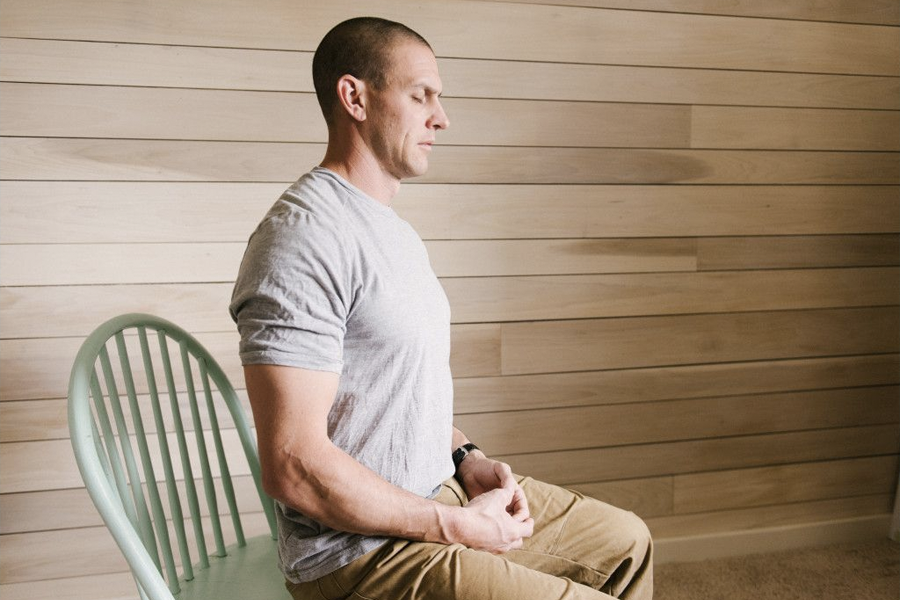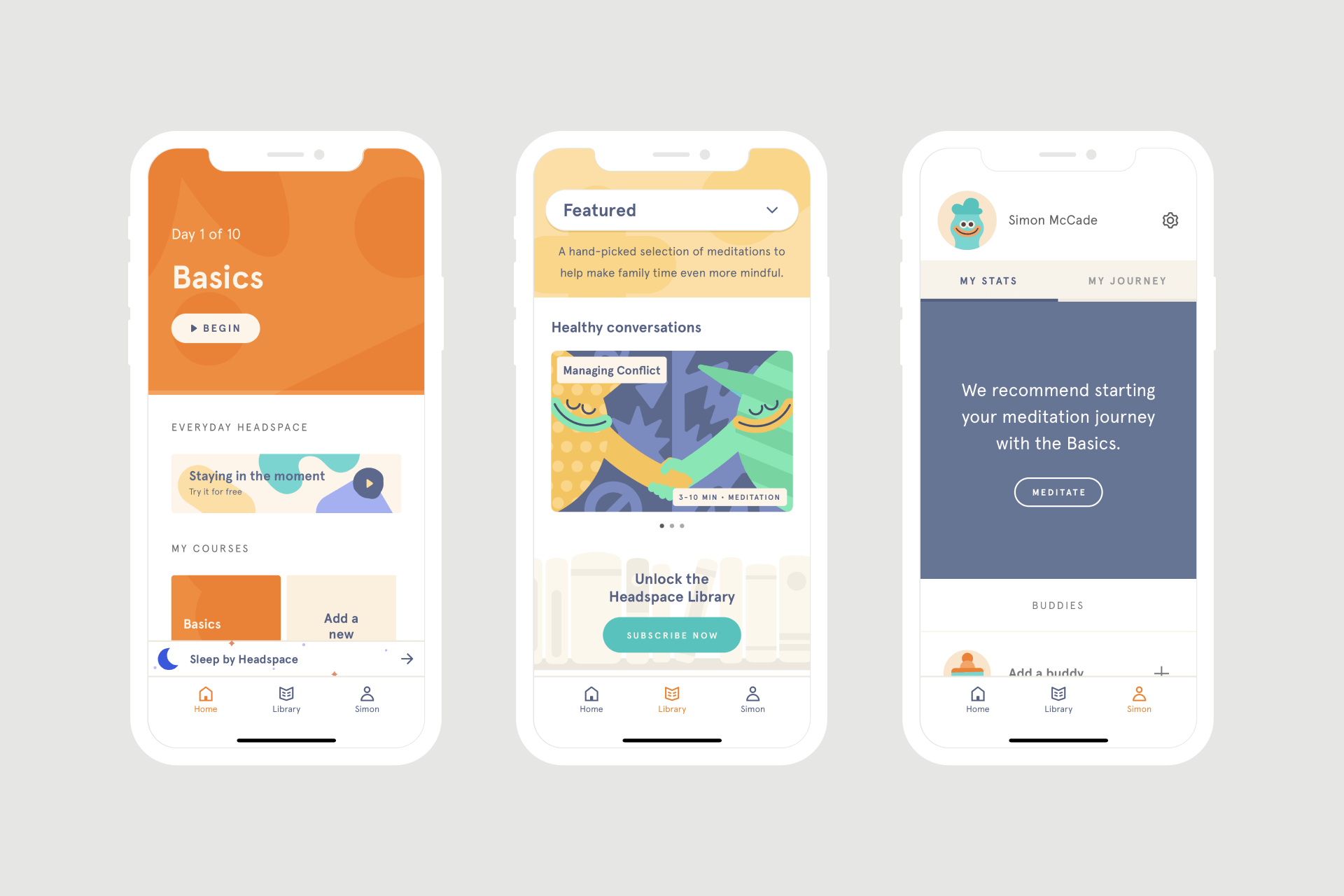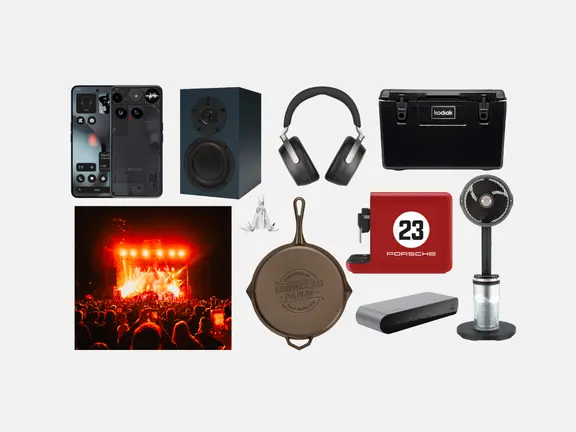
Published:
Readtime: 9 min
Every product is carefully selected by our editors and experts. If you buy from a link, we may earn a commission. Learn more. For more information on how we test products, click here.
There’s a good chance you’re stuck at home for an indeterminate period of time, making this your perfect opportunity to get into mindfulness and meditation. Who couldn’t use a little more mental balance and clarity in their life right now? Meanwhile, you might be wondering how to meditate in the first place and you’re not alone. Enter our beginner’s guide, which covers benefits, relaxation techniques, definitions, and other basics.
What is Meditation?
In the simplest sense of the concept, meditation is a dedicated practice during which the individual uses a specific technique to train his attention or awareness. When performed correctly, it can result in mental clarity, relaxation, and emotional stability, amongst other things.

Benefits of Meditation
If the outcome of mindfulness and meditation can be summarised in a word, that word is “relaxation.” However, some studies have found that meditation does far more than merely put you in a relaxed state. Other potential benefits include the following:
- Lower blood pressure
- Lower heart rate
- Slower respiratory rate
- Reduced anxiety levels
- General feelings of well-being
- Less stress
Some forms of meditation also put you in the present moment. This concept might seem simple enough, but it remains elusive for scores of people in the modern era. There’s genuine value to gain from merely existing in the now.
One thing to keep in mind is that the benefits of meditation are primarily looked upon as short-term outcomes. That said, the practice can still function as a reset button of sorts, clearing away distractions and thereby honing your focus and productivity throughout the day. And while some studies suggest that meditation can boost brain function or even improve your immune system for extended periods of time, the science is far from settled.
Then we have Buddhist meditation and its ultimate goal, i.e. mental liberation, absolute compassion, and prolonged inner peace. Untethered from the material world, you’ll experience what’s most often described as enlightenment, similar to Buddha’s followers before you. Is such a thing truly achievable in Western society? Maybe. Maybe not. But this is a beginner’s guide and so we’ll leave it off the plate for now.

How to Meditate
Rather than look for meaning in meditation, we recommend you try it out just to see where it takes you. The best way to do this is under the guidance of an experienced practitioner, especially if you’re pursuing transcendental meditation (TM). There are also plenty of mindfulness apps that can walk you through the journey.
No matter where you pick up the practice, you’ll need to consider the following factors:
- Right Time/Right Place – Consistency is key to an effective meditation routine. That’s why you should meditate at the same time and in the same place. Most people do it in the morning in a designated area inside their home or apartment.
- What to Wear – Relaxation and meditation go hand in hand and you should dress according to this principle. In other words: wear whatever makes you feel the most comfortable.
- How to Sit – You might have visions of some yogi with his legs folded and his fingers pointed upward, but that’s far from the norm. The truth is you can sit any way you’d like, permitted it’s comfortable and not distracting. A number of beginners sit upright in a chair with their back straight, neck relaxed, chin slightly tucked in, and hands resting on their lap or knees. You do you.
- Duration – Start by practising a few times a week and in sessions of 10 or 15 minutes, working your way up from there. If you’d prefer to start with say 5-minute sessions instead, that’s totally fine. On the flip side of that coin, you can kick things off like a rock star, meditating daily for 20 minutes at up.
- Know Your Motivation – If you have even a vague reason for meditating, you’re more likely to stick with the practice and benefit from it. That reason can be a general goal such as reducing stress or gaining focus, amongst other things. But if you go in with no motivation at all, you might not experience any tangible results, prompting you to give up on the practice altogether.
- Take it One Day at a Time – If you’ve ever learned anything in this life, then you know that practice is simply part of the process. Don’t expect to sit down and achieve enlightenment or even relaxation after the first session. Let the journey itself be your guide and you’ll improve over time.
- Stay Mindful – The better you get at meditation, the stronger its effect on your mental well-being. What’s important is that you preserve those benefits throughout the day. This is about clarity and calmness, both when you meditate and long after.

Common Obstacles for Beginners
Learning how to meditate can be an obstacle in and of itself for beginners, which is why so many people give up after a few sessions. Remember to bring some clear motivations to the table and practice on a consistent basis. Here are some potential obstacles to keep in mind:
- Time Constraints – Some of us struggle to carve out a proper slice of time for daily mindfulness and meditation. The good news is that you can miss a few days and still pick up where you left off. If you go for a very long period of time without meditating, reacquaint yourself with some basic techniques before proceeding.
- Sleepiness – Some people report feelings of sleepiness during the early stages of meditation, which makes sense given the emphasis on relaxation. To counteract these feelings, avoid lying down when you meditate and consider opening a window. You might also meditate in the morning when you’re feeling the most awake.
- Distractions – It’s a stimulating world and potential distractions are almost literally everywhere. Instead of seeking that perfect sanctuary of solitude, practice drowning out the exterior sounds and distractions. And if you simply must supplement, bring in some quality noise-cancelling headphones.

Types of Meditation
It should come as a surprise to no one that various types of meditation exist. However, the benefits remain fairly constant, namely relaxation, emotional stability, clarity, and empathy. Less concerned with meaning, meditation targets results. It’s all about finding the technique that works best for you and then sticking to a routine. Here are some of the most popular types of meditation:
1. Mindfulness Meditation
With this type of meditation, you’re asked to observe each thought as it enters your mind. As a result, you gain a greater sense of awareness toward both your own internal mechanisms and the nature of consciousness itself. A sense of inner balance ensues, as do feelings of empathy and understanding.
2. Concentration Meditation
Often practised in tandem with mindfulness meditation, this type asks you to focus on a single point or pattern, such as your breath, or a mantra, or an exterior sound, or a physical object. Through the power of repetition, your mind begins to wander until letting go of all worries and desires.
3. Buddhist Meditation
For somewhat obvious reasons, there is no one type of Buddhist meditation. However, it’s often said that Buddhist monks meditate to develop compassion and even achieve enlightenment. For all the true seekers out there, consider visiting a nearby temple to work directly with an experienced practitioner.
4. Transcendental Meditation
More popular now than ever before, this type of meditation doesn’t ask you to retain focus or even concentrate as you drift past the parameters of surface-level consciousness. In contrast to mindfulness, the goal is not to be aware of the present moment, rather go straight to the source of pure thought and creativity.
5. Other Types of Meditation
To explore the full extent of meditation is to jump down a proverbial rabbit hole, where you’ll find chakra meditation, yoga meditation, moving meditation (tai chi, etc), Metta meditation, Vipassana Meditation, and more. We recommend that you start with mindfulness meditation or concentration meditation and move forward from there.

Good Tools/Apps to Help Meditation
As we said before, the best way to learn how to meditate is to seek help from an experienced practitioner. That’s because he or she can respond directly to your actions and guide you accordingly. No matter what the era, there’s just something to be said for learning from a master and a human one at that.
On the other hand, you might be self-isolating right now and the last thing you want to do is get all up close and personal with a stranger. Thankfully, there’s no shortage of resources to help, including DVDs, articles, online videos, and meditation apps.
We previously covered some of the best mindfulness apps, but that article was written quite some time ago and a number of new apps have cropped up in the time since. Beginners and experts alike have nothing but positive things to say about Sam Harris and his Waking Up app, for example, which is free of charge to those who can’t afford a subscription.
Suffice it to say, you have your options. Find the tool that works best for you to gain some much-needed mental balance in these troubling times.
You’ll also like:
A Rookie’s Intermittent Fasting Guide
11 Top Meditation Apps To Grow Your Inner Peace
A Beginners Guide to the Ketogenic Diet
General FAQ
There are far more than three types of meditation. However, the most popular three types are as follows: mindfulness meditation, concentration meditation, and transcendental meditation.
To meditate at home, find a place where you can practice on a consistent basis. Try to meditate at the same time and in the same place. Wear whatever you’d like and sit in a manner that makes you comfortable.
There are different types of meditation and different ways to meditate. What’s important is that you try to meditate at the same time and at the same place, either every day or a few days a week. Comfort and consistency are key.
Proper meditation delivers a host of benefits. For instance, it can reduce stress and anxiety, enhance self-awareness, sustain mental balance, stabilise emotions, induce relaxation, improve focus, and reportedly lower blood pressure in the short term.


































Comments
We love hearing from you. or to leave a comment.